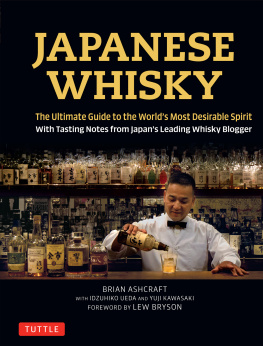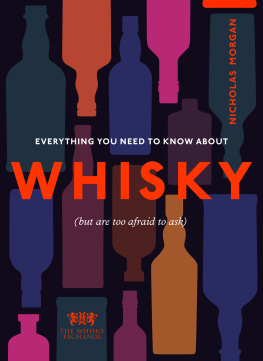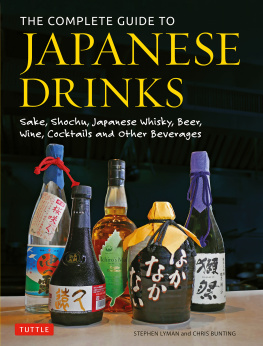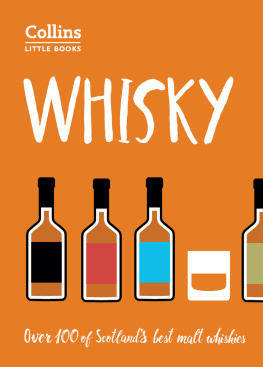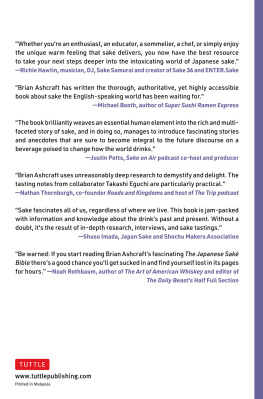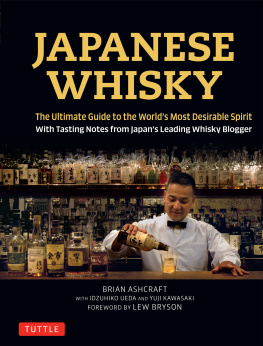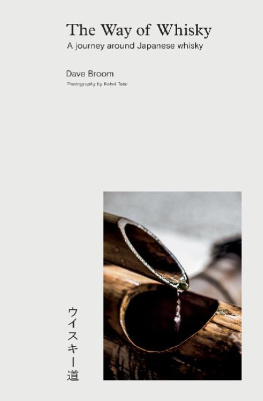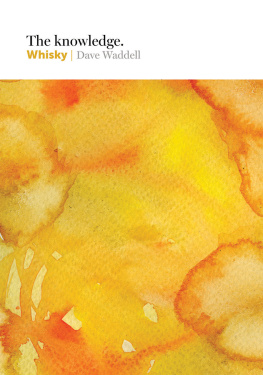
Brian Ashcraft has done us drinkers a real service here. A guide to where Japanese whisky came from and whos making it now, with careful advice on what bottles we might want to seek out, it is a reference Ive been hoping for. And now, with Japanese Whisky in hand, Im off to the liquor store.
Adam Rogers, Deputy Editor Wired Magazine, author of Proof: The Science of Booze
A tour de force. Japanese Whisky: The Ultimate Guide to the Worlds Most Desirable Spirit combines engrossing and well-researched history with trustworthy tasting notes, fascinating distillery guides and beautiful photography. Its not only an excellent practical look at one of the worlds most exciting alcohol traditions but also a great read.
Chris Bunting, author Drinking Japan and founder of Nonjatta.com
Japanese Whisky: The Ultimate Guide to the Worlds Most Desirable Spirit gives deep insight into the spirits history and also throughly explains the specialties of the drink.
Horst Luening, Whisky.com
This books love of the water of life shines through on every page. From the exhaustive account of Japans long relationship with whisky to the detailed descriptions of labels produced by its world-beating distilleries, Japanese Whisky should appeal to experienced buyers and novices alike. The perfect accompaniment to a Japanese single malt.
Justin McCurry, Tokyo correspondent for the Guardian
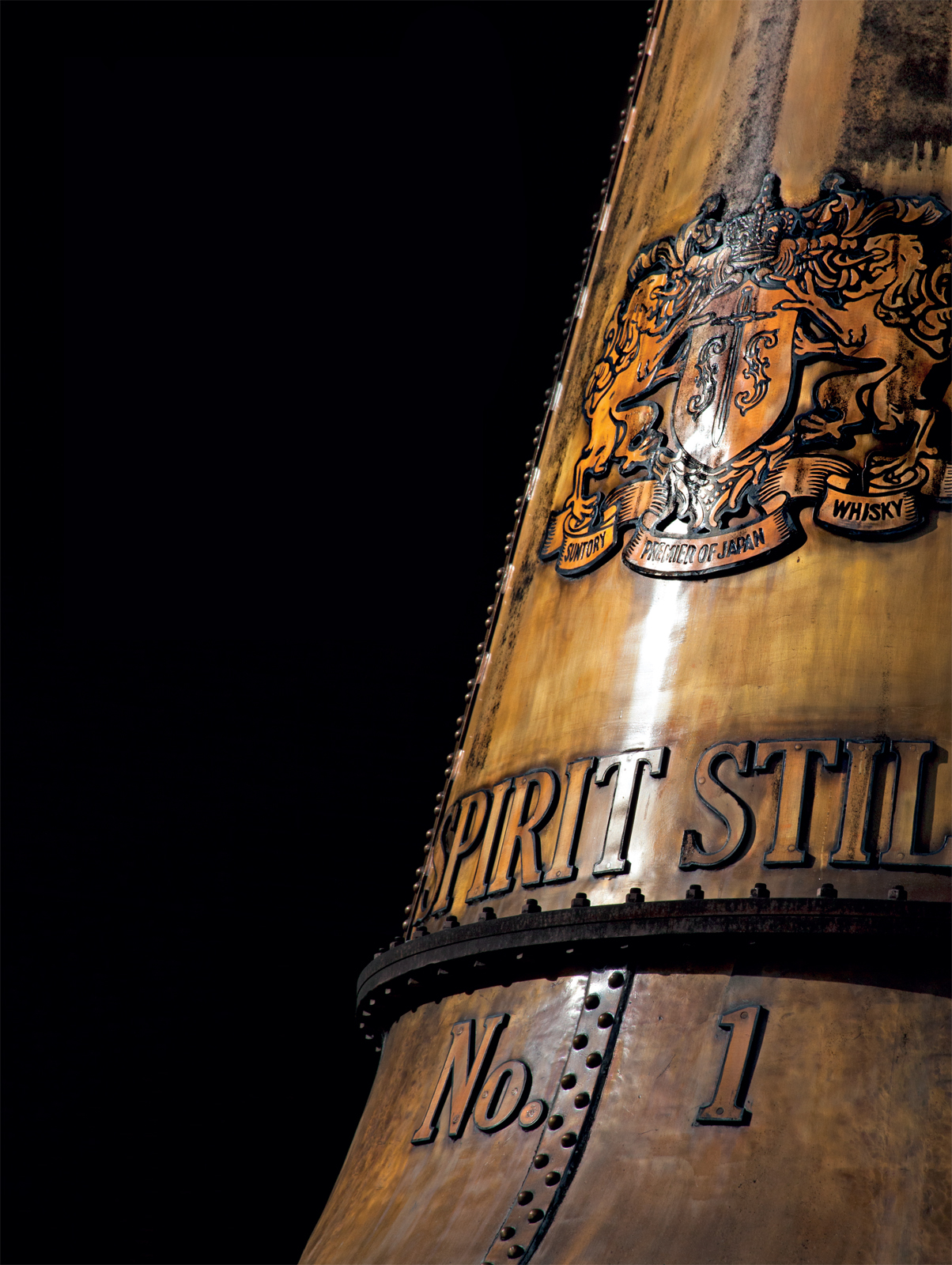
Japanese whisky has been around for under a century but is now winning all the major international awards. How did this happen and what are the secrets of Japanese whisky makers?
This book features previously unpublished archival images and interviews chronicling the forgotten stories of Japans pioneering whisky makers. It explains the special materials and methods used by Japanese distillers, including mizunara wood, Japanese barley and unique Japanese production methods. It also examines the close cultural connections between Japanese whisky drinkers and their favorite tipples. For the first time in English, over a hundred independently scored reviews are presented from leading Japanese whisky blogger Yuji Kawasaki, which shed new light on Japans most famous single malts as well as its grain whiskies and blends.

JAPANESE WHISKY
The Ultimate Guide to the Worlds Most Desirable Spirit
BRIAN ASHCRAFT
WITH IDZUHIKO UEDA AND YUJI KAWASAKI
FOREWORD BY LEW BRYSON

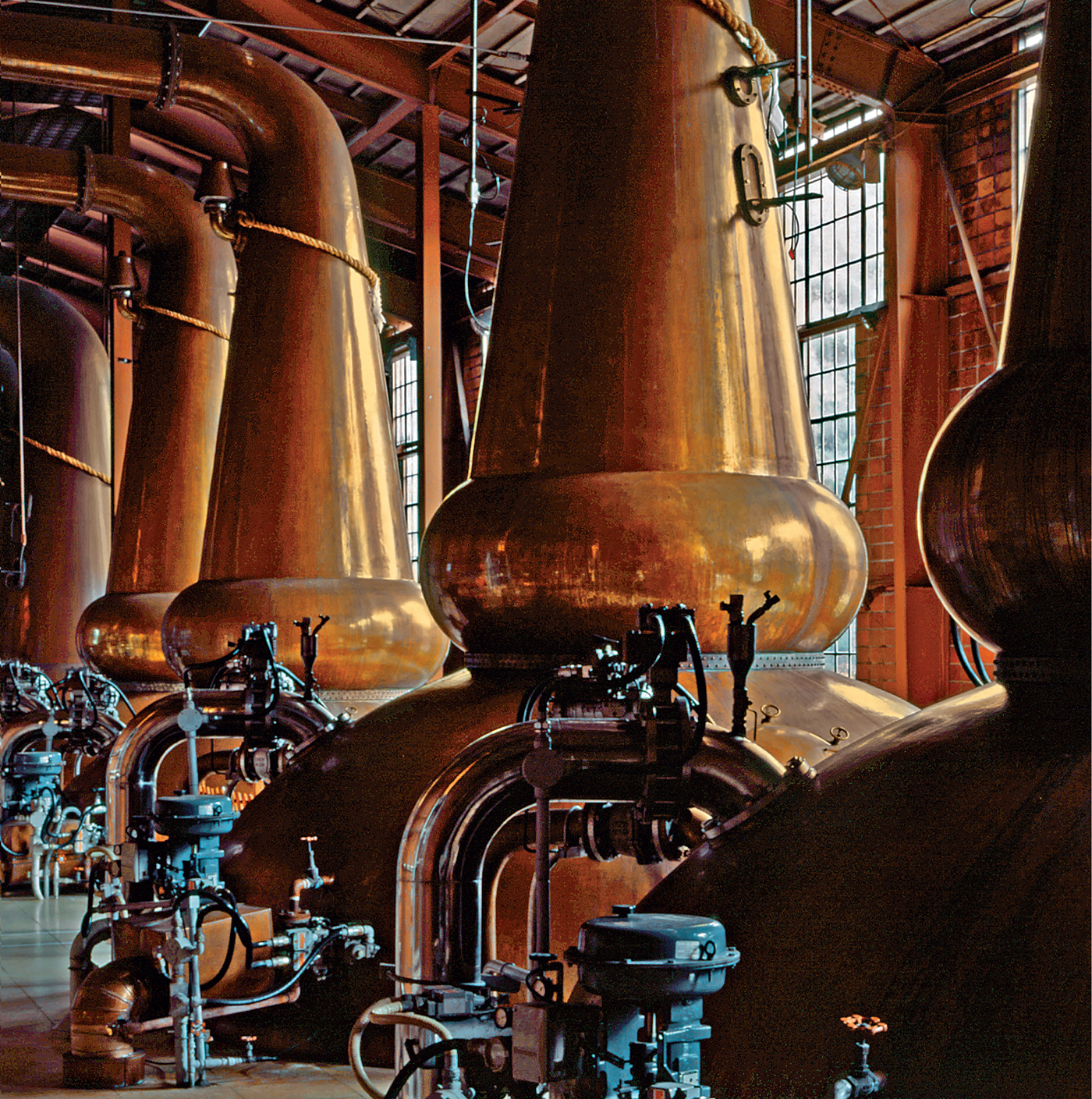
ABOUT THIS BOOK
To fully appreciate Japanese whisky, its necessary to put it in a larger context. For well over 1,500 years Japan has imported language, religion and culture, stamping its own distinct mark on all three. The country takes what it wants or needs and then artfully improves and localizes imports to suit local tastes. This is exactly what happened with whisky. But how? And why? The first part of this book examines how Japanese history, culture and religion have influenced Japanese whisky. The second part delves into the best Japanese whisky makers of today, showing why their stuff is unique and providing reviews and scores of various whiskies so that readers can get a good idea of what to expect from current and future releases. The last chapter introduces some of Japans newest distilleries and discusses future trends. Note that this is an independent work. None of the authors have ever worked or done consulting for any Japanese whisky maker and all of the whiskies reviewed and scored were paid for out of pocket.
How Did Japanese Whisky Become So Good?
Foreword by Lew Bryson
Up until about 2015, people still asked me pretty frequently, is there really Japanese whisky? After being assured that there most certainly was, the next question was, inevitably, is it any good?
The answer is a most definite yes. Despite the relative youth of Japans whisky industry and the small number of distillers, the quality and the distinctiveness of the spirits cannot be denied. It is not just good whisky, it is excellent whisky, and some expressions are rightly ranked among the very best in the world.
How did Japanese whisky get to be so good and how did it remain an unknown quantity for so long? As with so many other situations in whiskys evolution, its all about Scotch. As Japan came out of centuries of isolation in the mid to late 1800s, the ruling classes embraced the West, especially the Wests great naval power, the British Empire. Increasingly, that meant drinking Scotch whisky.
By the early 1920s an enterprising Japanese drinks magnate, Shinjiro Torii, realized that there might be money to be made by making whisky in Japan rather than shipping it halfway around the globe. As it happened, a young Japanese chemist, Masataka Taketsuru, had studied whisky making in Scotland and knew what was necessary to make whisky in Japan.
Torii ran the company, which is now known as Suntory, and Taketsuru managed the distillery. Differences arose, which led to friction, and Taketsuru went his own way, founding Nikka and building his own distillery. Each company would later build another malt whisky distillery, and a number of other distillers would follow them, albeit on a much smaller scale.
Japanese whisky thrived, but the other, more established whisky regions, particularly Scotland, had such a head start that Japans spirit couldnt make any headway. For all practical purposes, if you wanted to drink Japanese whisky, you had to go to Japan.
I was lucky enough to be present at one of the breakthrough moments that changed this state of affairs. As the managing editor of what was then Malt Advocate magazine, I was at WhiskyFest Chicago in 2005 when a very hesitant group of Suntory representatives stood behind a table stocking bottles of Yamazaki whisky.
No one knew how things would go but Id wandered over before the show opened to sample this new exhibitors whisky. Id never had Japanese whisky at this point. I asked for a sample of the 18 year old. My mouth fell open. This was great stuff! The component flavors were in balance, the essence of the malt was clear, the wood was not overpowering. I smiled and thanked them for the sample and then proceeded to tell everyone who asked what I recommended to try the Yamazaki.
I must not have been the only one spreading the word. By the end of the show, the Suntory group stood behind an empty table, stunned and smiling. Theyd been mobbed by the crowd, who enthusiastically embraced their product. I stopped by and congratulated them and they smiled and bowed and thanked mefor what, Im not sure! Given the influence of the caliber of the attendees at WhiskyFestretailers, whisky bar owners and the influential whisky consumersYamazaki, and all of Japanese whisky with it, was on the map in America.
People in the know jumped on Japanese whisky. It was excellent and it was largely unknown, and it was, for a brief time, bargain priced. I featured it regularly in tasting events. It was a happy time.
Reality caught up as demand rapidly depleted the stock of long-aged whisky. Japanese distillers were behind the curve, and while distilling can be stepped up, aging whisky takes time that simply cant be rushed. Were living with the consequences of thatmuch higher prices on harder to find whisky.
Next page
